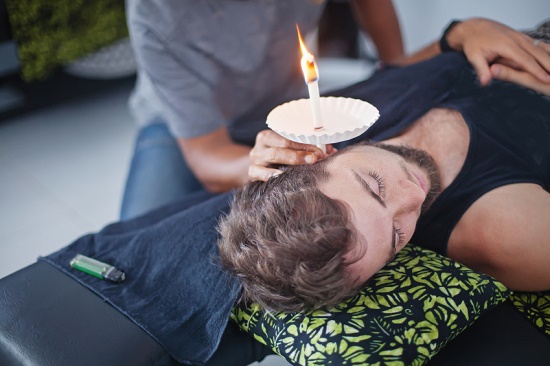
Our ears may be our most mistreated body part. We pierce them, subject them to deafening noise, force cotton swabs inside them, and burn them with ear candling. In spite of supplying us with one of our most vital senses, we seldom give our ears, or our hearing, much gratitude or consideration.
That is, until there are problems. Then, we recognize just how important healthy hearing really is—and how we ought to have figured out proper ear care earlier. The secret is to comprehend this before the damage is done.
If you want to avoid issues and safeguard your hearing, stay away from these 4 dangerous practices.
1. Ear Candling
Ear candling is a method of eliminating earwax, and also, as one researcher put it, “the triumph of ignorance over science.”
Here’s how ear candling is performed. One end of a thin tube made of cotton and beeswax is placed into the ear. The opposite end is set on fire, which allegedly creates a vacuum of negative pressure that draws earwax up into the tube.
Except that it doesn’t, for two reasons.
First of all, the ear candle doesn’t generate negative pressure. As explained by Lisa M.L. Dryer, MD, earwax is sticky, so even if negative pressure was created, the pressure required to suck up earwax would end up rupturing the eardrum.
Second, although the wax and ash resemble earwax, no earwax is actually discovered within the ear candle following the procedure. Clinical psychologist Philip Kaushall tested this by burning some ear candles the standard way and burning other candles without inserting them into the ear. The residue was the same for both groups.
Ear candling is also harmful and is strongly opposed by both the FDA and the American Academy of Otolaryngology (physicians specializing in the ear, nose, and throat), if you need any additional reasons not to do it.
2. Employing cotton swabs to clean your ears
We’ve covered this in other articles, but inserting any foreign object into your ear simply drives the earwax against the eardrum, generating an impaction and possibly a ruptured eardrum and hearing loss.
Your earwax is made up of beneficial antibacterial and lubricating characteristics, and is naturally removed by the regular movements of the jaw (from talking and chewing). All that’s needed from you is standard showering, or, if you do have problems with too much earwax, a professional cleaning from your hearing expert.
But don’t take our word for it: just look at the back of the package of any pack of cotton swabs. You’ll discover a warning from the producers themselves advising you to not enter the ear canal with their product.
3. Listening to exceedingly loud music
Our ears are just not equipped to manage the loud sounds we’ve learned how to generate. In fact, any sound louder than 85 decibels has the potential to create permanent hearing loss.
How loud is 85 decibels?
A normal conversation registers at about 60, while a rock performance registers at over 100. But here’s the thing about the decibel scale: it’s logarithmic, not linear. That means the leap from 60 to 100 decibels does not make the rock concert twice as loud, it makes it about 16 times as loud!
Likewise, many earbuds can create a comparable output of 100 decibels or higher—all from within the ear canal. It’s no real shock then that this can create permanent injury.
If you would like to conserve your hearing, ensure that you wear earplugs to live shows (and on-the-job if needed) and keep your portable music player volume at about 60 percent or less of its max volume (with a 60 minute listening time limit). It may not be cool to wear earplugs to your next concert, but untimely hearing loss is not much cooler.
4. Ignoring the signs of hearing loss
Finally, we have the unsettling fact that people tend to wait almost ten years from the onset of symptoms before searching for help for their hearing loss.
That means two things: 1) people unnecessarily experience the consequences of hearing loss for 10 years, and 2) they render their hearing loss much harder to treat.
It’s true that hearing aids are not perfect, but it’s also true that with today’s technology, hearing aids are remarkably effective. The level of hearing you get back will depend on the seriousness of your hearing loss, and given that hearing loss has a tendency to get more serious as time passes, it’s best to get tested and treated as soon as you notice any symptoms.
